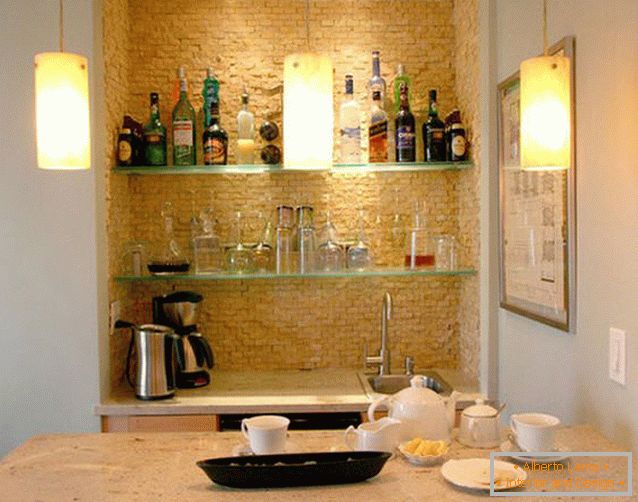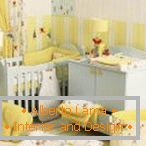
In ancient times, architecture began with the construction of dwellings, then people began to erect monuments and symbolic structures in honor of rulers and deities in which they believed. Naturally, these monumental buildings were, if possible, adorned. To learn how to create more elegant elements, crafts began to be mastered. The latter served as an impetus to the emergence of artistic values and the appearance of a person's desire for "the beautiful." Primitive houses were equipped not only with the necessary minimum of objects for a comfortable life, but also with things that did not have a specific purpose. They figured exclusively as a beautiful addition. These elements were later called "decor", which in Latin translates as "decent", "decent". In the houses richer on decorating the interiors did not save, the poor were satisfied with the small, but even managed to revive their shacks with the help of improvised means. Nowadays, decor elements refer to the components of the interior decoration of the room on a par with furniture. Together with the decoration of walls, ceiling and floor, they create a unique design picture. For each style is characterized by the use of certain types of decorative elements.
The concept of "decoration" reflects the main purpose of jewelry in the room. The design is used in theatrical productions in order to transfer the action to the necessary conditions and visualize the background situation.

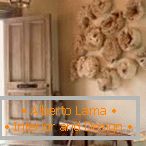
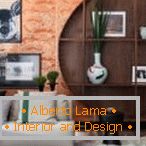
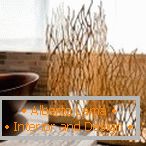

Variety of decorative objects
Decor in the broadest sense of the word is classified by the combination of characteristic features into three types:
| Architectural | Usually it is part of the interior decoration. |
| Sculptural | The concept includes a rich assortment of products: from figurines to compositions from clay and gypsum. |
| Picturesque | The main representatives of the group are paintings. |

There are also "interspecific" combinations. For example, the relief (not a characteristic, but a branch of art) combines sculptural and pictorial types: on a flat plane create voluminous compositions. There is also another classification according to the degree of "activity" of decorative objects:
- Passive. Involves only when necessary to decorate the room.
- Active. They are an integral part of the architectural design and perform specific functions.

Also, decorative objects are divided into those that are purchased in stores, and made with their own hands. The latter are closely related to the process of creativity and needlework. Stuffs that are the result of handwork are valued higher in order, as they are exclusive details that will make the interior unique. To pick up decorative elements for a city apartment or a private house it is possible independently or to address for the help to experts. The latter is important for complex stylistic decisions in elite apartments, when the situation should fully correspond to the concept of the chosen direction. By location, the objects are classified into four groups:
- Desktop. Lamps, figurines, watches.
- The floor. Large vases, lamps.
- The wall. Watches, paintings, sconces, mirrors.
- Ceiling. As a rule, we are talking about chandeliers, although in the experimental interiors there are cases of placing images over their heads.
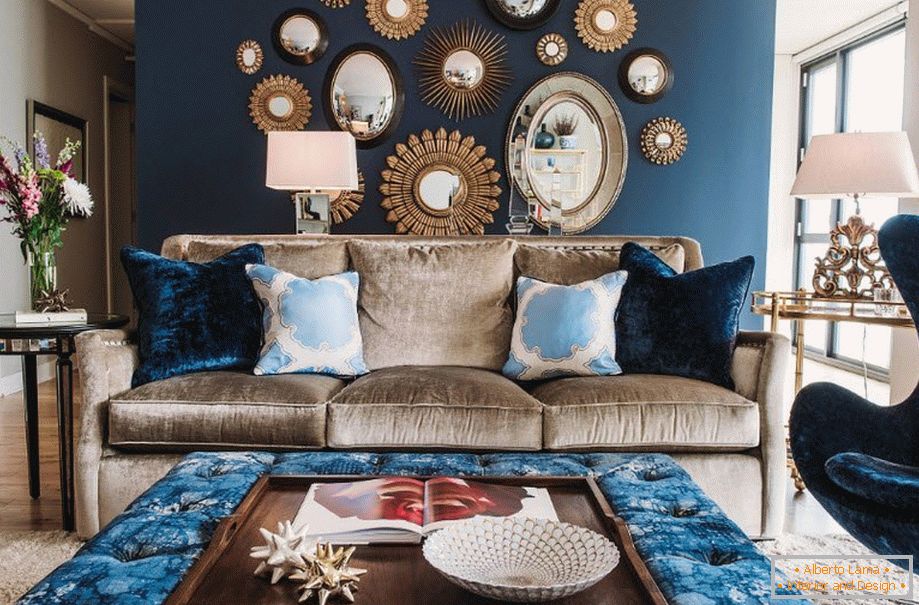
On materials of execution, the items are divided into:
- Wooden. Performed from any breed, often with thread elements.
- Stone. Water, as is known, grinds a stone, but for a man this task is many times more complicated. For this reason, products made of natural stone, as a rule, are highly valued because of the laboriousness of the creation process.
- Metal. Casting and forging are the main ways of creating such things.
- Ceramics. Elegant and accurate items that often repeat national motives. Suffice it to recall Chinese or Russian porcelain.
- Gypsum. It is an accessible material for creating sculptures.
- Glass. From it, individual elements or stained glass mosaics are performed.
- Polyfoam, polyurethane, cardboard, plywood, paper. Used to create inexpensive compositions, due to the democratic cost of materials.
- Textile. This broad category includes many elements: from interior dolls to curtains on windows.
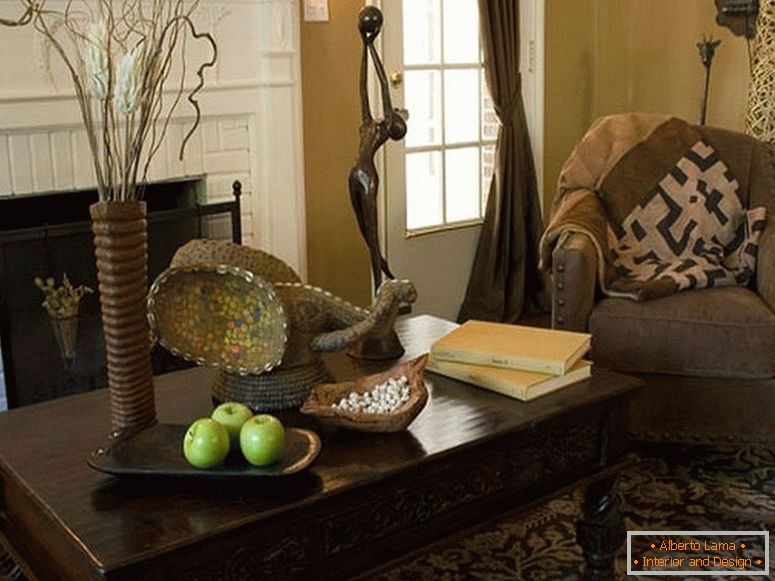
Decoration is always thoroughly "impregnated" with stylistic motifs. Each design direction has its own specific elements. For example, the exquisite decor of the classical style will look inappropriate in a room decorated in the Provence. Elegant and stylish gizmos used in the loft, absolutely not suitable for a practical chic chic.
For premises of a certain type, conditional norms are imposed on the allowable number of decorative elements. In the kitchen, in the corridor and in the bathroom, they should be smaller, in the bedroom they are allowed moderate application, but the living room can be variegated with ornaments that will not spoil it at all. Also, the decor can be universal or narrow, only for rooms of a certain type. For example, the fireplace is classified in the first category, and figured jars for storing spices - to the second.

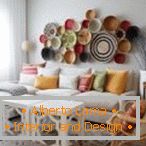

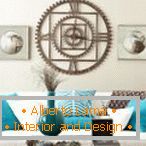

Stone and marble in the interior
Stone and marble are used as a decorative decoration of the room and serve as a material for independent products. In the lining of the walls it is used to embody expensive styles with a claim to luxury. And in most cases a cheaper imitation is used, which can not be visually distinguished from the original. Grinded marble - a universal material, it is made of countertops, shells, figurines, boxes, stands, bowls, tableware, "legs" lamps and even vases. The stone brings a natural touch to the interior, so it is popular in the "eco-friendly" environment.


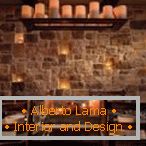


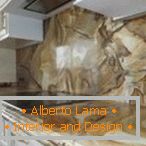
Elements of decor with motifs of waves
Contrary to delusions, such things are used not only for decorating premises in the marine style. For "wavy" lines, the introduction of dynamics into space is characteristic. They are able to revive too boring or serious interiors and simultaneously adjust to a calm mood, help to relax. Perhaps in this case, the effect of a calming "swinging" on the waves is triggered. Such motifs are more often found in textiles: curtains, rugs, pillows, furniture upholstery, bedspreads. Slightly less "wavy" theme is met in the paintings and forms of vases, decorative bottles, watches. Traditionally, similar lines are made in blue, blue and green shades.
"You can start a wave" can even be on the laminate, if you combine it correctly with ceramic tiles. The boundary of the combination must have a characteristic outline.

Interior items in the Italian Renaissance style
In recent years, there has been a triumphant return of Renaissance motifs to interiors. For objects characterized by a raid of Italian luxury and grace. Of course, decorative elements do not look modern, but dynamically adapt to mixed styles, effectively shading their eccentricity. From the Renaissance, they borrow vases, partially exposed sculptures, columns, dishes, stucco molding, specific floral ornaments on surfaces and thematic images of laurel wreaths.
See also: Photo frames in the interior - 50 photos of ideas 
Original decor elements in the form of hands and gestures
Sculptures depicting the hands in characteristic gestures, perhaps, the most non-trivial decoration of the interior of recent years. Such art objects are referred to as late abstractionism. Inspiration modern masters draw from the heritage of Auguste Rodin. The French sculptor attached special importance to his hands. He often exaggerated their size, creating huge compositions of intertwined fingers. The most famous creation of the master in this style is "The Hands of the Creator", decorating the author's museum in Paris. Elements of decor, depicting various gestures, refer to the laconic options that people choose original, not afraid of experiments.
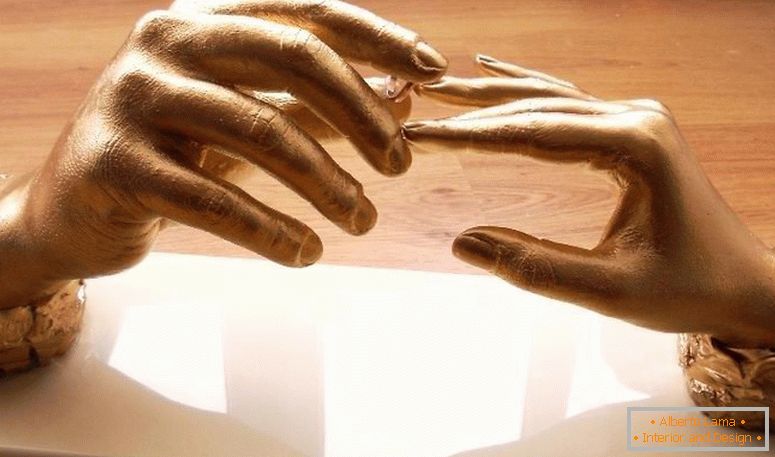
Bright vases and accessories for the interior
Elements of decor, made in bright colors, play the role of accents in the room. With the help of such color spots, designers draw attention of the guests to specific areas of the room. Items can perform two functions:
- Distract from the shortcomings;
- Conditionally show where are the "best sides" of the interior.
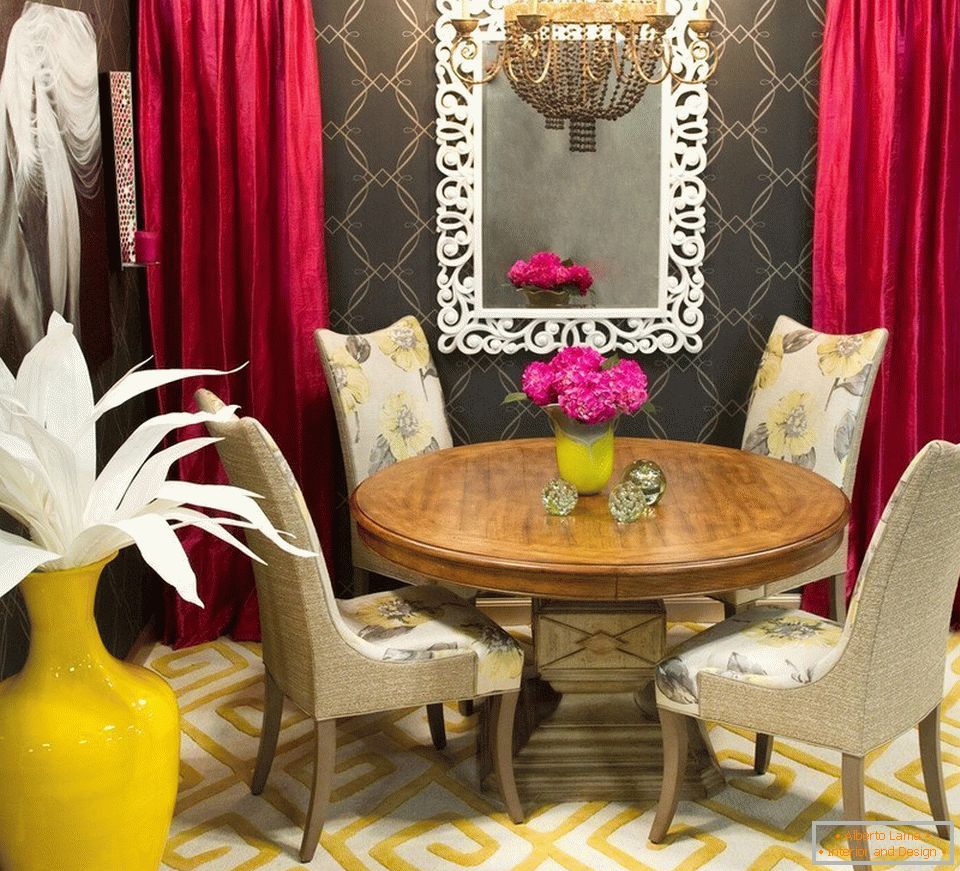
In an environment where neutral colors prevail, bright vases, bowls, a stand, watches, lamps do not save. In variegated decoration they are used at a minimum, so as not to load space.
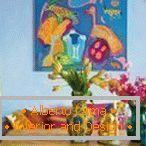
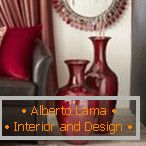
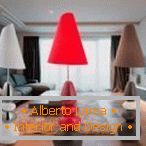

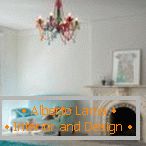
Interior items with animals
The smaller brothers in paintings, statuettes, images on textile surfaces always attract attention to themselves and show that owners have a good sense of humor. Dogs, cats, rabbits and other lovely home animals are suitable for mischievous and eccentric styles. In strict interiors, snakes, running horses, wolves, foxes, leopards will harmoniously enter. Any predators that are the embodiment of strength and danger, emphasize the seriousness of the situation.

Watches and paintings
As for the paintings, these elements of decor open a lot of opportunities for the designer. From their location, the model of the frame and the image at times all the perception of the decorated zone depends. When placing the pictures it is necessary to take into account the rule "57 inches": the art object is located at eye level about 150 cm from the floor. Its center should fall on the conditional line, only so a person can view the image in detail. Recently, collages have come into fashion, which are made up of several paintings (starting from three) in various combinations. The dimensions of the individual parts of the composition can vary from tiny to large. Collages adorn the accent walls in the room, and their characters can be completely different: images of people, flowers, city panoramas, still lifes, landscapes. The clock has long ceased to be used only for its intended purpose. Nowadays such fancy lines of form and materials of execution are actual, that sometimes at first glance it is difficult to guess what exactly is in front of you. The clock can be wall, floor and table. There are original models built into the countertops, which are part of the collage on the walls, "draining" from the window-sills (surrealist card of Salvador Dali), with "sectors" filled with loose materials of different colors and fractions. Time diversity allows you to choose a unique option that will suit a particular interior.
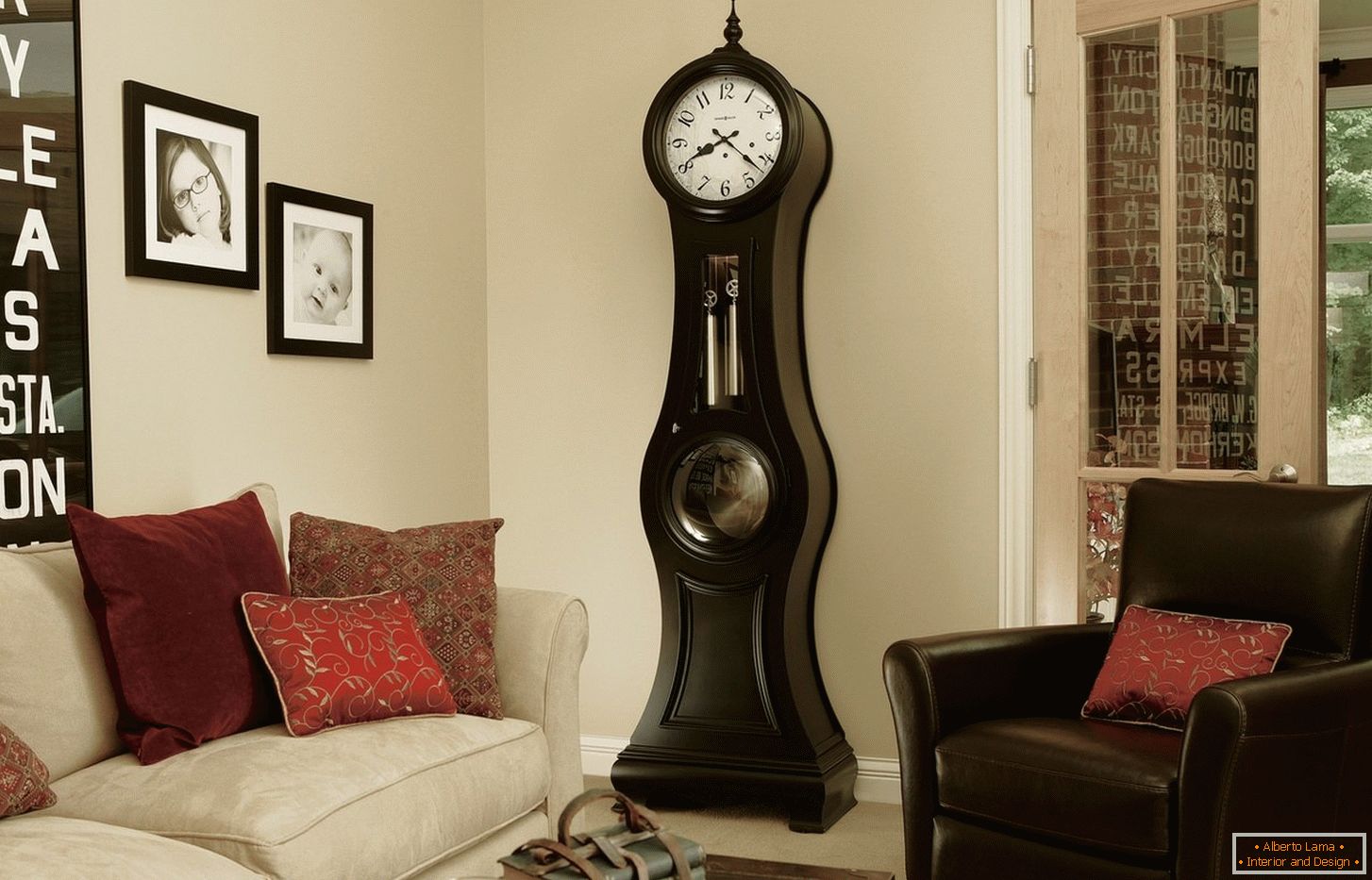





Mirrors in the original version
Mirrors, too, at one time fell under the "sights" of tenacious design looks, and began to embody the most unusual of their imaginations. Eco-style frames are made of real branches or parts of tree trunks. In the minimalism and hi-tech, the surfaces of the mirrors themselves are original: volumetric, convex, consisting of many faces. For those who want to stand out, the compositions of the "cracked" pieces, which in chaotic disorder are attached to the wall, will do. In this technique, "honeycombs" are created: combinations of pieces of the same shape (hexahedrons) and sizes. Mirror can be part of the artistic composition, its three-dimensional element. For example, the wall is decorated with a huge image of the head of a dandelion or "dill" umbrella, and the "parachutes" in it are made of reflective pieces, round in shape. Mirror surfaces are used for finishing kitchen aprons, walls in the living room and furniture facades.
Read also: Decorating walls with decorative plates +75 photo 
Candlesticks and lamps
Lamps and candlesticks are primarily considered as a functional unit. They compensate for the lack of natural light, and only then perceived as an art object in the interior. Fixtures are used everywhere. They put on the floor, on the tables and hang on the walls. In recent years, spot illumination has become very popular, which creates an atmosphere of luxury in the room. A "branch" of bare bulbs, wrapped around the frame of a mirror or doorway, is a stylish addition to modern design. The variety of shapes, shades, materials of execution, allows you to complete any design, highlighting its merits. Lamps get the last, they are like the last strokes on the canvas, which correct the resulting picture. Candlesticks are used less often, since they are mistakenly associated exclusively with antiquity. Fashion trends did not bypass them, and allowed to look at a familiar subject from a different angle. Their "legs" are made of wood, metal, glass and even stone.
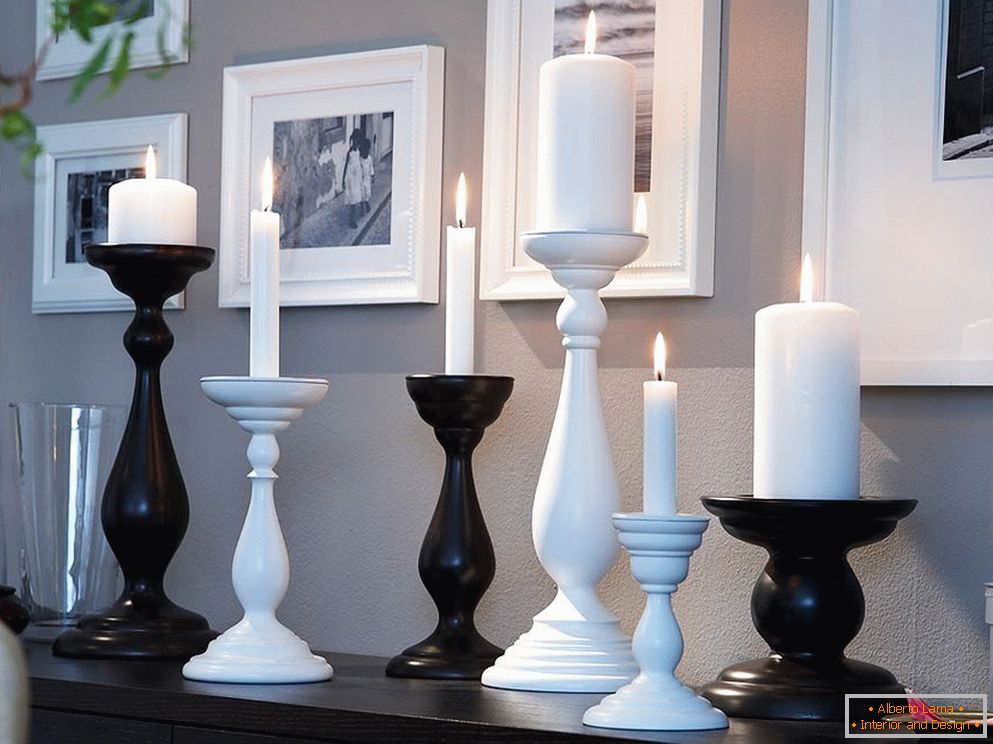
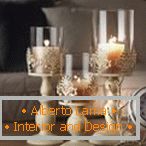


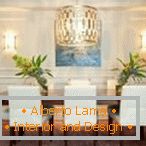
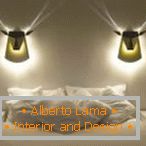
Decor items by own hands
To decorate a premise with objects of own manufacturing resort to the technique of decoupage, painting, beadwork, embroidery, knitting, patchwork, scrapbooking. The number of ways to create original art objects is huge, and everyone can find a hobby to taste. If you have never tried yourself in a similar case, then on the World Wide Web, you can easily find the necessary master classes with a detailed description of each stage of the work. For a hobby use threads, ribbons, pieces of fabrics, colored paper, accessories, wire and other improvised means, with which the usual objects change beyond recognition or fundamentally new things are created. Making a decorative element with your own hands, it's easy to feel yourself the creator of the decoration of the house.
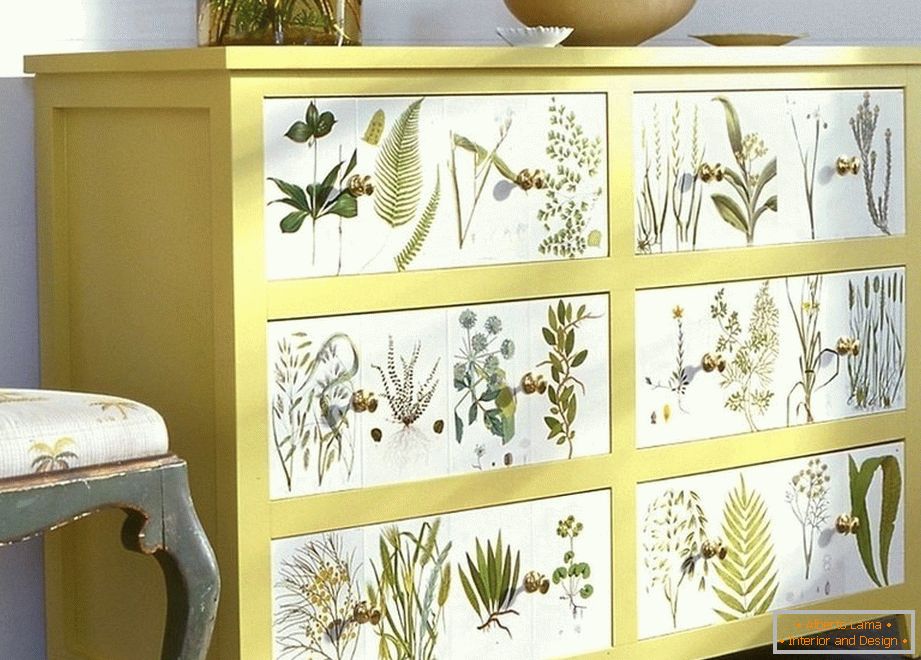
How to choose interior decoration items
When decorating the interior focus on two important aspects:
- Stylistic solution;
- Possibility of premises.
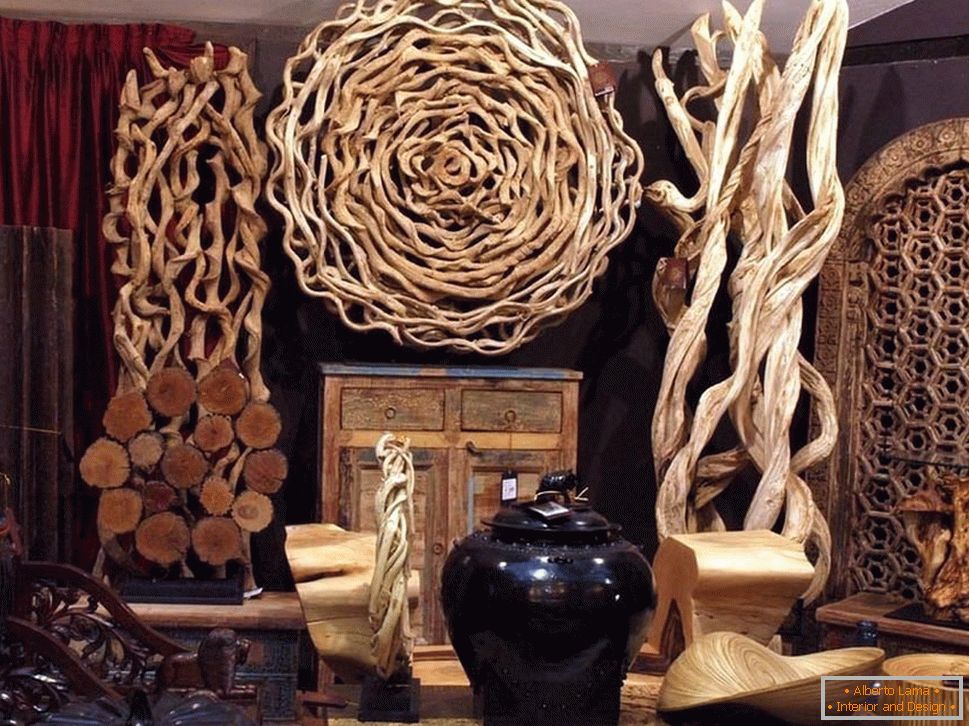
Styles with a bias in minimalism are missing a couple of items for decoration, and in classical directions, decor is usually not stingy. In the minds of modern man, the notion of luxury has changed a lot and has become associated with simple details. They emphasize the elegance of decoration with unusual shapes, expensive materials, "fashion" colors, and not at the expense of their quantity. It is also worth considering the size of the room. In small rooms do not recommend the use of an abundance of small items that "load" a tight space. Large decorative objects are suitable for the same premises, only in such cases they will not look "lonely" and inappropriate.
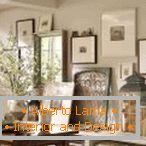
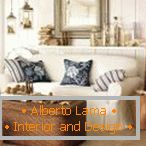
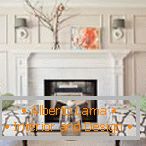

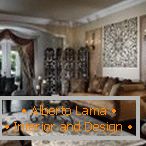
Conclusion
Decor is called the "soul" of the room. If the furniture gets a type, found in other apartments, albeit in different combinations, then the aesthetic preferences of the owner appear in small details. Decorative items make the interior alive, "warm" and cozy. Their combinations are always unique, which allows us to talk about the author's design.

